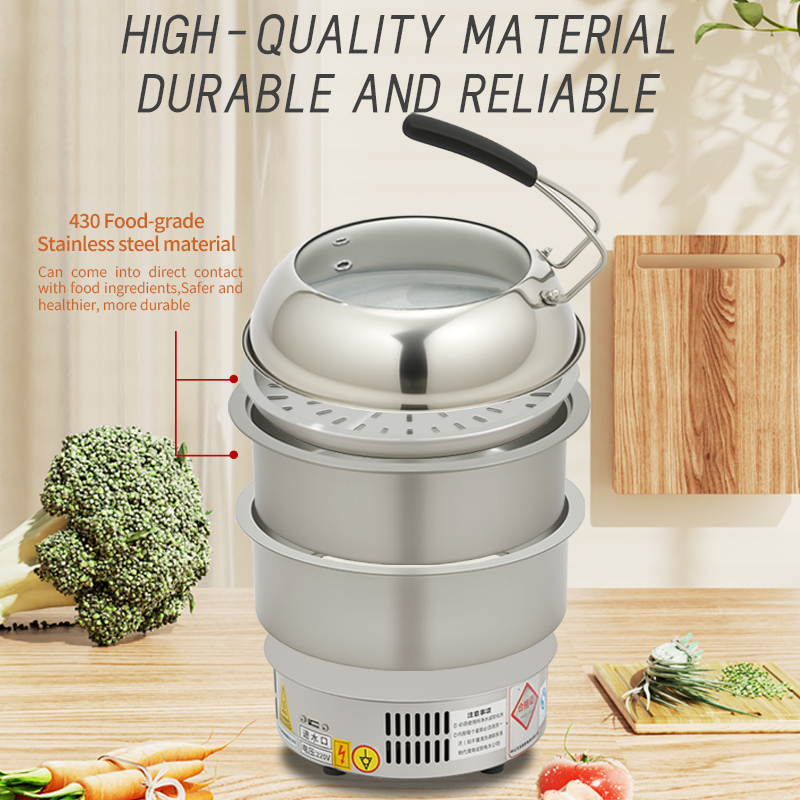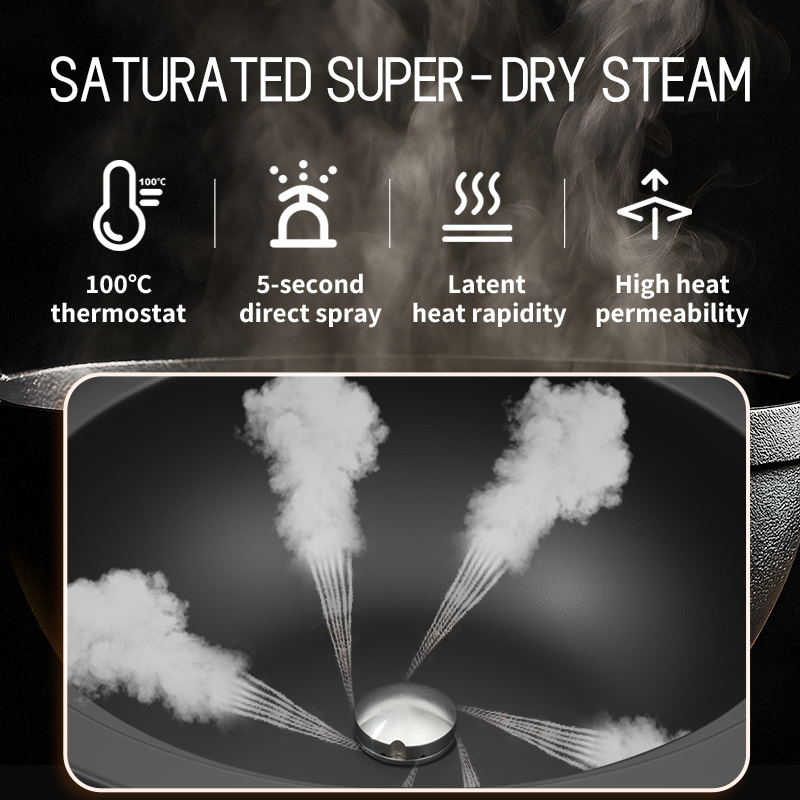1. Stainless Steel Steamer Market Insights: Why Are Stainless Steel Steamers Becoming a New Kitchen Favorite?
1.1 Healthy Eating Trends Drive Demand Growth. The global stainless steel steamer market has a compound annual growth rate of 6.8% (data source: Statista 2023). Stainless steel is the preferred material among consumers due to its "no plastic pollution risk" and "high-temperature resistance and no deformation." It is particularly popular among families with children and those who work out.
1.2 User Profiles and Key Pain Points of Stainless Steel Steamers
• Home Users: Seek Large Capacity (3L and Above) and Multi-Layer Design
• High-End Users: Value Intelligent Temperature Control and Aesthetic Design (such as a Mirrored Stainless Steel Body)
• Environmentalists: Focus on Energy Efficiency and Material Recyclability
Pain Points: Plastic Steamers Have Unpleasant Odors, Bacteria Harvest in Dead Spots, and Low-Priced Products are Susceptible to Rust
II. Analysis of High-End Steamer Design Trends
2.1 Material Upgrade: From 304 to 316 Medical-Grade Stainless Steel
• 316 Stainless Steel: Adding Molybdenum Improves Salt Spray Corrosion Resistance by 30%, Suitable for Coastal Areas
• Composite Thermal Conductive Layer: Some brands (such as Cuisinart) use a 5-layer steel-aluminum composite bottom, which increases heating efficiency by 20%
2.2 Intelligent Interactive Design of Stainless Steel Steamers
• Integrated Touch Panel: Precise Temperature Control (±1°C Accuracy), Timer Function
• Transparent Window + LED Lighting: Real-Time Monitoring of Food Status to Prevent Loss of Temperature When the Lid is Opened
2.3 Modular Structure Removable steaming tray and separate water tank design, dishwasher-safe, such as the Instant Pot Omni Plus series.
III. Durability of Stainless Steel Steamers: Comparison of 5 Models Brand Inner Thickness Anti-Fingerprint Technology Ease of Cleaning Price Range Cuisinart STS-1000 1.2mm Nano-Coating Seamless Welding (No Dead Spots) $200-$250 Braun MultiGourmet 0.8mm Brushed Finish Removable Tray $150-$180 Domestic Brand A 0.5mm No Residual Scale on the Edge $50-$100
Conclusion: High-end models use thicker stainless steel and specialized craftsmanship to extend their lifespan by 3-5 years.
IV. Energy Saving and Sustainability: Stainless Steel vs. Traditional Steamers
4.1 Energy Consumption Comparison
• Stainless Steel Steamer: Average power consumption 800W, steams fish in 15 minutes (0.2 kWh)
• Open-flame steamer: Gas consumption approximately 0.15 m³, carbon emissions 40% higher
4.2 Environmental Advantages
• Stainless steel has a recycling rate of up to 90%, while only 30% of plastic steamers are biodegradable after use
• ENERGY STAR-certified models (such as the Philips HD9190) are recommended
V. Deep Cleaning a Stainless Steel Steamer: 5 Steps to Restore a Stainless Steel Steamer to Like-New Style
5.1 Daily Steamer Care
• Immediate Drying: Wipe with a soft cloth immediately after use to avoid water stains
• Citric Acid Descaling: Dissolve in a 1:10 ratio and soak for 10 minutes to remove calcified deposits
5.2 Dealing with Stubborn Stains
• Baking soda paste: Apply to rusted areas of the steamer, let it sit for 20 minutes, then wipe with a sponge.
• Tools not recommended: Steel wool can damage the protective chromium oxide layer, causing rust.
VI. FAQ: 8 Most Commonly Asked Questions
Q1: Can stainless steel steamers rust?
→ High-quality 316 stainless steel steamers will not rust under normal use. Avoid storing high-salt foods for long periods of time.
Q2: Can stainless steel steamers be dishwasher-safe?
→ Only models marked "dishwasher-safe" (such as the Tefal Ultimate Pure) are safe. Hand washing is recommended for standard models.
Q3: How to fix a clogged steam vent?
→ Use a toothpick to clear it. Sanitize with a white vinegar steam cycle once a month.
Q4: Is a high-end model worth the investment?
→ If used more than three times a week, the maintenance savings within three years will more than cover the price difference (see cost calculation table for details).
• Conclusion: Stainless steel steamers are evolving from a "functional item" to a "kitchen quality symbol" thanks to their safety and sustainability. When choosing, you need to balance your budget and long-term usage costs, and give priority to modular design and authoritatively certified models.


